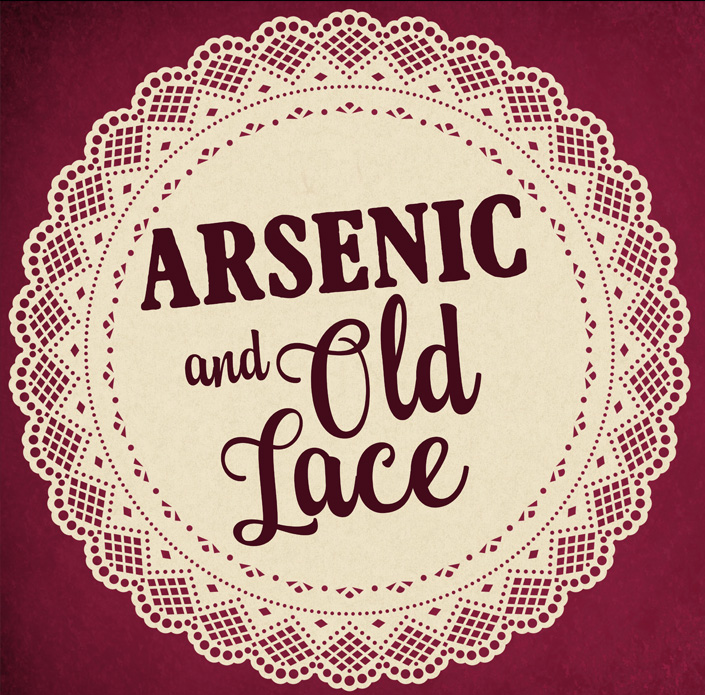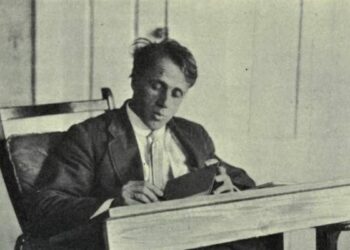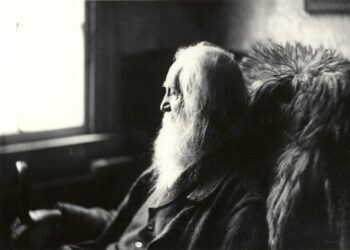Table of Contents
ToggleIntroduction
Arsenic And Old Lace Summary By Joseph Kesselring Arsenic and Old Lace is a dark comedy play written by American playwright Joseph Kesselring. First performed in 1941, this theatrical work combines elements of slapstick humor, farce, and suspense with a witty critique of societal norms. The play gained widespread popularity over the years, especially after its successful Broadway run and the 1944 film adaptation directed by Frank Capra, starring Cary Grant.
At the heart of Arsenic and Old Lace is the quirky and morbidly humorous story of two elderly sisters, Abby and Martha Brewster, who run a boarding house in Brooklyn, New York. These seemingly sweet, well-meaning women harbor a shocking secret—they have been poisoning lonely elderly men with arsenic as an act of “charity” and burying them in the cellar. This dark subplot intertwines with a series of hilarious and absurd events, as other members of the Brewster family get entangled in the web of lies, madness, and mayhem.
This play stands out for its eccentric characters, outlandish situations, and sharp dialogue, all of which create a blend of humor and horror. The themes of deception, moral ambiguity, family dynamics, and mental illness are explored in a lighthearted but thought-provoking manner.
Plot Summary of Arsenic and Old Lace
Act 1
The play opens in the Brewster family home, where two elderly sisters, Abby and Martha Brewster, welcome a new guest, Mortimer Brewster, their nephew. Mortimer, a theater critic, has just become engaged to his girlfriend, Elaine Harper, and is concerned about the future of his family, particularly his two aunts. While Mortimer is in the midst of a conversation with Elaine about their marriage, he uncovers a sinister secret—his aunts have been poisoning elderly men who come to stay at their boarding house, a practice they believe to be an act of mercy. They justify their actions by claiming they are “helping” these men end their lonely lives in peace. Mortimer is horrified but is unable to come up with a plan to stop them.
Meanwhile, his brother, Teddy, who believes he is Theodore Roosevelt, adds further chaos to the situation. Teddy’s eccentric behavior, including his constant shouting of Roosevelt’s famous phrases and his tendency to “dig the Panama Canal” in the cellar, creates an additional layer of absurdity. Teddy’s antics add to the family’s dysfunction, as he believes that his aunts’ actions are part of a larger “mission” to save the world.
As Mortimer navigates the disorienting and increasingly ridiculous situation, he tries to keep the truth from Elaine and others, including the police, while maintaining his sanity. The discovery of the aunts’ actions leads to Mortimer becoming more desperate, especially after his brother, Jonathan, who has a criminal background, returns home with his own dark agenda.
Act 2
In Act 2, Jonathan and his accomplice, Dr. Einstein (a disreputable surgeon who has helped Jonathan with various shady activities), arrive at the Brewster house after fleeing from the law. Jonathan has undergone a drastic physical change through plastic surgery, making him nearly unrecognizable, but he remains as menacing and ruthless as ever. Jonathan’s presence adds to the chaos and danger, as he plans to add more bodies to the already-murdered victims of Abby and Martha.
While Mortimer tries to handle the insanity of the situation, his aunts continue to offer their own brand of “kindness” by explaining how they have been helping lonely men find peace. As tensions rise and the family’s secrets continue to unravel, Mortimer becomes more frantic. The absurdity of the situation escalates as Mortimer works to prevent the authorities from discovering the truth about his family.
In a series of comedic and farcical exchanges, Jonathan’s plans are thwarted, and the chaotic blend of humor and tension continues. The characters’ absurdities intensify as they become entangled in misunderstandings, lies, and increasingly ludicrous scenarios.
Read more
Act 3
The final act brings the play to a climactic conclusion. Mortimer’s attempt to maintain normalcy while dealing with his aunts, Teddy, and Jonathan is thwarted when the police arrive at the Brewster house. Mortimer’s fears of exposing the bizarre happenings in the house only intensify, and a series of humorous yet dark events unfolds as the characters scramble to cover up the truth.
In the end, Mortimer is forced to confront the absurdity of his family’s actions. His aunts, though guilty of murder, are shown to be entirely unaware of the moral implications of their behavior, which makes their actions even more absurd. The resolution of the play is both a return to normalcy and a reaffirmation of the farcical nature of life itself.

Themes in Arsenic and Old Lace
1. The Absurdity of Morality and Human Behavior
A central theme in Arsenic and Old Lace is the question of morality and the absurdity of human behavior. Abby and Martha’s murders, while clearly illegal and immoral, are carried out with the best of intentions—an ill-conceived form of charity for the lonely elderly. This disconnect between their good intentions and the horrific outcome is central to the play’s dark humor. The juxtaposition of the sisters’ apparent goodness with their actions reveals the complexity of human nature, where good intentions can result in disastrous consequences.
Jonathan, too, represents another form of moral ambiguity. While he is a hardened criminal with no apparent remorse, his relationship with Dr. Einstein and his criminal activities are treated with a comedic touch, blurring the lines between villainy and absurdity.
Read more
2. Family Dynamics and Dysfunction
The Brewster family is a chaotic and dysfunctional unit, with each member bringing a unique brand of madness to the table. Teddy, with his delusions of grandeur and belief that he is Theodore Roosevelt, symbolizes the absurdity of the family’s collective insanity. Abby and Martha, despite their gruesome acts, exhibit a naiveté that adds to the humor of the play. Mortimer’s own desperation to maintain a sense of normalcy amidst the chaos speaks to the frustration of trying to make sense of a dysfunctional family.
Family loyalty and relationships are central to the play, but they are complicated by the bizarre actions of each character. Mortimer’s love for his aunts, despite their murderous tendencies, underscores the complexity of familial bonds and the dark humor that arises from such relationships.
3. The Absurdity of Death and the Afterlife
The theme of death is explored in Arsenic and Old Lace with both humor and horror. The aunts’ view of death as an act of mercy reflects the theme of the absurdity of human understanding of death. They do not see themselves as murderers but as benefactors, offering release from loneliness and suffering. Their distorted perception of death and the afterlife highlights the contrast between their good intentions and the monstrous outcomes.
The play also addresses the absurdity of the afterlife through the characters’ interactions with the dead bodies, which are treated as nothing more than inconveniences to be hidden. This irreverence towards death and the afterlife plays into the broader comedic tone of the play, where even the darkest subjects are approached with a sense of absurdity.
4. The Conflict Between Order and Chaos
The Brewster home serves as a microcosm of chaos, where order is continually disrupted by the antics of the characters. Mortimer’s attempts to keep the peace and prevent his family’s dark secrets from being discovered are constantly thwarted by the bizarre behavior of his relatives. The tension between Mortimer’s desire for normalcy and the overwhelming chaos of his family’s actions drives much of the humor in the play. This conflict between order and chaos reflects broader societal concerns, showing how the disruption of social norms can lead to unpredictable and often humorous consequences.

Conclusion
Arsenic and Old Lace remains one of the most beloved dark comedies in American theater history. Its blend of absurdity, farce, and sharp critique of morality and family dynamics ensures that it remains relevant and entertaining. Through its eccentric characters, humorous dialogue, and exploration of the absurdities of human behavior, the play provides a unique and thought-provoking commentary on the complexities of family, morality, and the human condition.
Read more
(FAQ)
1. What is the central message of Arsenic and Old Lace?
The central message of the play revolves around the absurdity of human behavior, especially within the context of family dynamics and morality. While the play deals with dark themes like murder and death, it uses humor and farce to explore the complexities of human nature, emphasizing that even the most bizarre actions can have logical or sympathetic explanations. Ultimately, the play suggests that life is full of absurdities, and humans must learn to laugh at them.
2. Why is Arsenic and Old Lace considered a dark comedy?
Arsenic and Old Lace is considered a dark comedy because it juxtaposes the grim subject matter—murder and death—with humor and farce. The characters’ reactions to their criminal actions, their absurd justifications, and the over-the-top situations they find themselves in create an atmosphere of comedic irony that provides levity to the dark themes.
3. How does the character of Mortimer Brewster function in the play?
Mortimer Brewster serves as the play’s protagonist and the straight man amidst the madness. His reactions to his family’s eccentricities, and his frantic attempts to maintain normalcy, drive much of the play’s humor. Mortimer is torn between his love for his family and his desire to distance himself from their absurd and criminal actions, making him a relatable character in the chaos of the play.
4. What role does the setting play in Arsenic and Old Lace?
The setting of the Brewster family home plays a crucial role in the play’s atmosphere. The house, a seemingly ordinary Brooklyn home, becomes a symbolic space where the line between normality and insanity blurs. The physical space of the house—with its cellar filled with bodies and the peculiarities of the family members—reinforces the play’s themes of family dysfunction and the absurdity of human behavior.
5. How does Arsenic and Old Lace reflect the culture and society of the time?
Arsenic and Old Lace reflects the culture and society of the early 20th century by highlighting themes of family loyalty, societal norms, and the tensions between order and chaos. The play’s comedic treatment of murder and death reflects a growing interest in darker humor, while its portrayal of family dynamics speaks to the traditional values and expectations placed on individuals at the time.

















